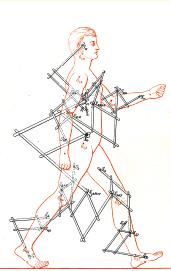This project investigated a problem that has hardly received attention from historians: the emergence of the scientific study of human walking in the first decades of the nineteenth century in Western societies (particularly France, Germany, and Britain). To gain insights into the laws of human walking in its normal and pathological forms in order of its improvement or accurate representation became the concern of a variety of professional groups such as anatomists, physiologists, neurologists, orthopaedists, shoe-makers, artists, gymnastic teachers, and the military.
The general question this project raised was the following: How and to what extent did scientific knowledge about the anatomy and physiology of the moving body shape walking practices in modern Western societies? Instead of constructing a linear history that privileges the physiology of the moving human body, this project retraced in closer detail the problem of establishing a defi nition of “normal walking.” Medical studies of walking disorders challenged and altered the advancement of the anatomy and physiology of moving bodies on various grounds. The first important nexus that was explored concerned the connections between medical research and warfare, i.e., the concrete articulation of military marching practices, experimental arrangements for the study of locomotion, and medical investigations of walking disorders. Second, the emergence of new diagnostic and therapeutic techniques in the same period demonstrates how the locomotion physiologists were challenged by a multifarious semiotics of pathological walking. The third larger complex of the project concerned the transformation of walking equipment as a consequence of new anatomical and physiological knowledge. In this context, the calling for a general reform of footwear and its industrial and political ramifi cations was reconstructed and analyzed more closely. By the 1850s, anatomists in Germany, Switzerland, and Britain propagated a new form of “rational shoes” for the army and the population at large, i.e., footwear that would correspond to the “natural” anatomical structure and movement of the feet. In the long run, such reforms had more lasting effects than the projects pursued by locomotion physiologists.

